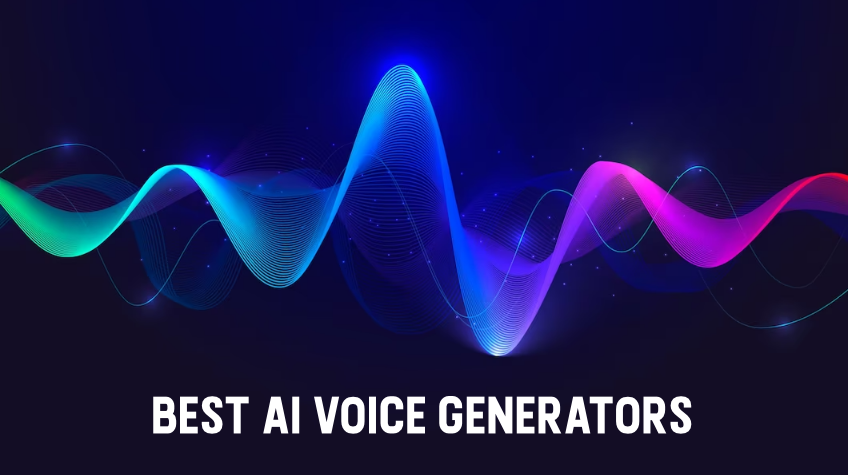Decoding Text-to-Speech: Top AI Generators of December 2023

Navigating the Best of TTS: Top Generators of December 2023
As technology advances at an astounding rate, the field of Text-to-Speech (TTS) has not been left behind. In December 2023, TTS generators have surpassed previous benchmarks, offering unprecedented realism and efficiency. These generators harness the power of Artificial Intelligence (AI) to provide a seamless experience that is transforming the way we interact with machines. This evolution of TTS technologies opens up new realms of possibilities for users, ranging from developers seeking to embed intuitive speech interfaces in their applications to content creators aspiring to bring their written work to life with natural-sounding voices that captivate their audience.
The best TTS generators are now capable of delivering smooth, human-like intonation and clarity in a multitude of languages, breaking down barriers in accessibility and communication. Strategic advancements in AI voice generators have facilitated this, making them indispensable tools for global business operations and personal use alike. As we tread into a world where voice-enabled interactions become increasingly integral, these TTS generators are not just conveniences but essential components that redefine the auditory landscape of our digital interactions.
| Topics | Discussions |
|---|---|
| Understanding Text-to-Speech Technologies | Explore the fundamental principles and the evolving landscape of TTS technologies that are shaping user interactions with digital content. |
| 10 Best "Text to Speech" Generators | A curated selection highlighting the most powerful and efficient TTS generators, perfect for developers and creators looking to enhance digital experiences. |
| Leading TTS Technologies and Their Development | Delving into the cutting-edge of TTS development, focusing on groundbreaking AI algorithms and neural network advancements that drive innovation. |
| Programming Tutorials for TTS Integration | Practical programming guides and code samples that encapsulate the integration of TTS functionality into various software applications. |
| Common Questions Re: TTS | Addressing the frequent queries about TTS capabilities and considerations, offering answers that help demystify the technology's functionality. |
Understanding Text-to-Speech Technologies
As the capabilities of Text-to-Speech (TTS) technologies evolve, so does the lexicon associated with them. For those delving into the depths of TTS, a clear understanding of the terminology is vital to fully grasp the breadth and scope of these advancements. This glossary offers definitions for the foundational terms that underpin TTS technology and its related fields, equipping researchers, software engineers, and innovators with the vocabulary to navigate and contribute to the ongoing discussion and development within this fascinating area of study.
Text-to-Speech (TTS): The technology that converts written text into spoken words, typically through synthetic voices.
Artificial Intelligence (AI): The simulation of human intelligence processes by machines, especially computer systems, enabling tasks that typically require human intelligence such as visual perception, speech recognition, and decision-making.
Neural Network: A computing system inspired by the biological neural networks that constitutes animal brains. In TTS, it refers to the models that process audio data to generate speech.
Deep Learning (DL): A subset of machine learning that employs algorithms inspired by the structure and function of the brain called artificial neural networks. It plays a crucial role in developing sophisticated TTS systems.
Machine Learning (ML): A type of AI that allows software applications to become more accurate in predicting outcomes without being explicitly programmed to do so.
API (Application Programming Interface): A set of protocols and tools for building software and applications. A TTS API allows developers to easily integrate speech synthesis capabilities into their applications.
Natural Language Processing (NLP): A branch of AI that helps computers understand, interpret, and manipulate human language to perform tasks such as translation, sentiment analysis, and topic segmentation.
Synthesis: In TTS, the creation of human-like speech sounds by a computer.
Speech Recognition: The ability of a machine or program to identify words and phrases in spoken language and convert them into machine-readable format.
Voice Quality: Refers to the characteristics of a voice, such as pitch, loudness, and timbre, which contribute to the subjective perception of its sound.

10 Best "Text to Speech" Generators
The curated list titled "10 Best 'Text to Speech' Generators", updated by Alex McFarland in December 2023, serves as a critical resource for those seeking state-of-the-art TTS solutions. It is tailored to inform users about the latest market offerings in TTS technology, with detailed comparisons grounded in factors such as voice realism, the breadth of languages supported, the level of customization possible, interface simplicity, and the ease with which developers can integrate these systems into existing applications using APIs.
At the crux of these TTS platforms lies the cutting-edge AI technology—often deep learning and sophisticated neural networks—that enables them to accurately convert text into a naturalistic auditory experience. The selection demonstrates the industry's commitment to innovation and usability, with each generator bringing its unique strengths to the table. The list's timing implies it incorporates advancements and refinements introduced up to the close of 2023, highlighting solutions that are at the vanguard of TTS technology.
While specific author affiliations or institutional connections are not mentioned, the date of publication indicates a period of rapid developmental strides in AI and TTS arenas, suggesting these generators are on the leading edge of current capabilities. This list is undoubtedly an important tool for a diverse array of users—including developers, content creators, and corporate interests—looking to enhance or embed TTS functionality in their digital platforms.
Leading TTS Technologies and Their Development
Text-to-Speech (TTS) technologies have significantly evolved, largely thanks to advancements in the field of Artificial Intelligence (AI). Developers now have access to a plethora of TTS tools that are capable of generating speech indistinguishable from human speakers. This evolution has its roots in the progress of AI algorithms—especially those in the domain of Deep Learning (DL)—which can process natural language at an unprecedented level of sophistication.
These leading TTS technologies leverage advanced neural network architectures, such as Convolutional Neural Networks (CNNs) and Recurrent Neural Networks (RNNs). They synthesize speech by understanding the nuance and variability in human voices. The development of these TTS systems focuses on improving the natural flow, intonation, and emotional expression, with the goal of delivering a seamless conversational experience.
With each breakthrough, TTS becomes more ingrained in various applications, from navigational aids to interactive educational tools. This expansion is fueled by the growing accessibility of TTS technologies, enabling a broader range of developers and creators to incorporate sophisticated voice synthesis into their work, creating more engaging and accessible user experiences.
Programming Tutorials for TTS Integration
Scripting TTS Systems with Python
Python is one of the most widely used programming languages in the field of AI and Machine Learning (ML), and it offers excellent libraries for integrating TTS. Libraries like pyttsx3 or gTTS provide a straightforward way for developers to add speech synthesis capabilities to their Python applications. Here is a basic example of how you can use gTTS in Python:
from gtts import gTTStts = gTTS('Hello World', lang='en')tts.save('hello.mp3')
The script above initiates a gTTS object with the text "Hello World" and saves the output as an mp3 file. Python's simplicity and the power of its TTS libraries make it ideal for prototyping and developing applications that require speech output.
Building TTS Applications with Java and Javascript
Java and Javascript are also popular for building TTS applications. In Java, you might use FreeTTS—a library that can turn text into spoken words, and is based on the Flite speech synthesis engine. Here's an example of how one would use FreeTTS in a Java application:
import com.sun.speech.freetts.*;Voice voice;VoiceManager voiceManager = VoiceManager.getInstance();voice = voiceManager.getVoice("kevin16");voice.allocate();voice.speak("Hello, World");
In the case of Javascript, the Web Speech API offers TTS capabilities and is built into most modern web browsers. It’s an easy way to implement TTS in web applications, as shown in the example below:
var synth = window.speechSynthesis;var utterance = new SpeechSynthesisUtterance('Hello World');synth.speak(utterance);
Regardless of the programming environment, incorporating TTS into your projects is becoming more accessible, and for developers looking to include audible feedback or interactive voice responses, these examples provide the foundational steps for getting started.
Panel Discussion Highlights
The Unreal Speech TTS API represents a significant leap forward in making speech synthesis more accessible and cost-effective. Its affordability, with costs slashed by up to 90%, makes it an attractive option for a wide range of users, including academic researchers who can utilize this cost-efficient tool for developing various speech data-driven studies and experiments. For educational applications, such economical solutions enable a larger scale of deployment, enhancing learning environments with synthesized speech that aids in language learning or serves differently-abled students.
Software engineers and game developers will find Unreal Speech particularly valuable not only for its competitive pricing but also for its technical capabilities. With low latency of 0.3s and an impressive uptime of 99.9%, developers can integrate responsive and reliable speech features into their applications or games. This is crucial for creating real-time applications that require quick turnaround times for speech generation.
Furthermore, the ability to process substantial volumes of text—up to 625M characters per month under the Enterprise Plan—accommodates the needs of users with high throughput requirements. Considering the positive testimonial from Derek Pankaew, CEO of Listening.com, regarding the TTS's cost savings and superior quality, along with its scalability in handling high volumes, Unreal Speech demonstrates its readiness to support the rigorous demands of commercial and high-level research undertakings alike.
Common Questions Re: TTS
What's the Best AI for Text-to-Speech Conversion?
The best AI for text-to-speech conversion is typically one that employs the most up-to-date machine learning and neural network techniques to produce lifelike and natural-sounding speech, such as the ones featured in the latest TTS generators.
How AI Generates Speech from Text: A Deep Dive
AI generates speech from text through a process that includes collecting vast datasets of human speech, training neural networks to recognize patterns in the data, and then using these models to convert text input into spoken output.
Are There Free AI Tools for Voice Generation?
Yes, there are free AI tools for voice generation available, which provide developers and creators with opportunities to incorporate speech synthesis into their projects without incurring high costs.